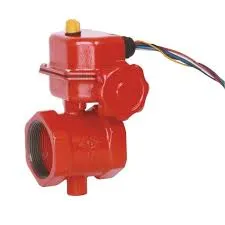
- Call Us
- +8618633052223
- njhdvlz@163.com
Aug . 06, 2024 07:55 Back to list
Factory Production of Reverse Flow Check Valve for Optimal Fluid Control Solutions
Understanding Reverse Flow Check Valves in Factory Settings
In various industrial applications, the importance of ensuring that fluids, gases, or slurries flow in a single direction cannot be overstated. One essential component that facilitates this process is the reverse flow check valve. These valves play a crucial role in maintaining the integrity of fluid systems, preventing backflow, and ensuring equipment operates efficiently.
What is a Reverse Flow Check Valve?
A reverse flow check valve, often simply referred to as a check valve, is a mechanical device designed to allow fluid to flow in one direction while preventing reverse flow. This functionality is vital in many applications, such as water supply systems, chemical processing plants, and HVAC systems. When the pressure on the inlet side of the valve exceeds that on the outlet side, the valve opens, allowing flow. If the pressure drops, the valve automatically closes, creating a barrier against backflow.
The Importance of Manufacturing Quality
The manufacturing process of reverse flow check valves is critical to their performance and longevity. Factories that specialize in these components utilize advanced technologies and stringent quality control measures to ensure reliable product output. The choice of materials is just as vital; stainless steel, brass, and various plastics may be employed depending on the application, chemical compatibility, and pressure requirements.
Moreover, manufacturers often conduct rigorous testing to certify that their products meet industry standards and regulations. This ensures that the check valves can withstand the pressures and conditions they will face in real-world applications without failure.
Applications Across Industries
reverse flow check valve factory

Reverse flow check valves find utility in a diverse array of industries. In the water treatment sector, they prevent the backflow of contaminated water, safeguarding clean water supplies. In the oil and gas industry, these valves protect pumps and compressors by limiting backpressure that could damage sensitive equipment.
Additionally, in manufacturing and processing plants, check valves are essential for maintaining the flow of various fluids and preventing costly disruptions. In HVAC systems, they ensure that air and refrigerants flow correctly, improving efficiency and extending the life of equipment.
Advances in Technology
Recent advancements in valve technology have led to the development of smarter, more efficient reverse flow check valves. Some modern designs incorporate features such as built-in sensors and automated control systems, which allow for real-time monitoring and adjustments based on operational demands. These innovations enhance the reliability and efficiency of fluid systems, reducing the risk of leaks and system failures.
Furthermore, the rise of digital manufacturing technologies, such as 3D printing, is transforming the production of check valves. This technique allows for greater design flexibility and customization according to specific client needs, leading to optimized performance in unique operating conditions.
Conclusion
In summary, reverse flow check valves are critical components in numerous industrial applications. Their ability to control fluid flow direction enhances operational efficiency and protects equipment from potential damage. As manufacturing technologies continue to evolve, the future of these valves appears bright, with more innovations tailored to meet the diverse demands of various industries. For factories looking to maintain a competitive edge, investing in high-quality reverse flow check valves from reputable manufacturers is essential for guaranteeing the reliability and safety of their fluid systems.
-
3 Butterfly Valve Dimensions | GPT-4 Turbo Precision Specs
NewsJul.31,2025
-
Stainless Steel Sanitary Butterfly Valve for Hygienic Flow Control
NewsJul.30,2025
-
High-Performance Groove Butterfly Valve for Easy Installation
NewsJul.30,2025
-
High-Quality 2 Inch Butterfly Valve for Precise Flow Control
NewsJul.29,2025
-
Double Flanged Short Pattern Butterfly Valve for Reliable Flow Control
NewsJul.29,2025
-
High Quality Wafer Check Valve Factories – Reliable Manufacturer & Supplier
NewsJul.29,2025